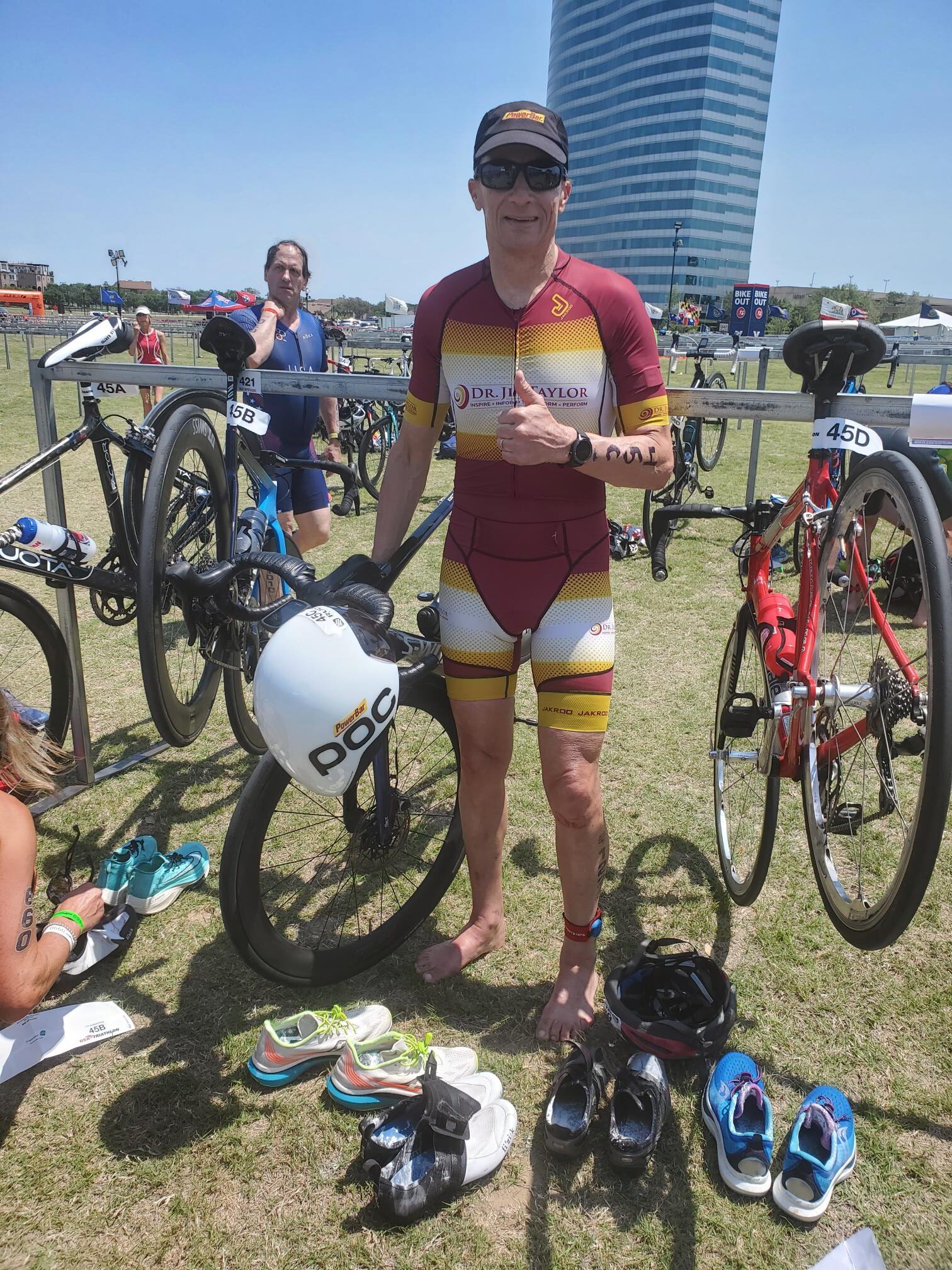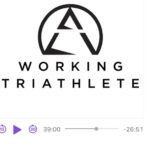In my last segment of my “I Practice What I Preach” series, I explained that you don’t always want to listen to your body when you’re training and racing. The reality is that, if you did, you would slow down or stop when you started to experience high perceived effort or exertion pain. Instead, you want to harness the power of your evolved brain to resist those messages and keep on going. The $64,000 question (or is it $640,000 question now due to inflation?) is how to do that.
to your body when you’re training and racing. The reality is that, if you did, you would slow down or stop when you started to experience high perceived effort or exertion pain. Instead, you want to harness the power of your evolved brain to resist those messages and keep on going. The $64,000 question (or is it $640,000 question now due to inflation?) is how to do that.
 Like most serious endurance athletes, I think I’m pretty good at resisting those “please stop!” messages from my body when I’m training and racing. At the same time, when my body is screaming at me to ease up or stop, it can be a real challenge to defy those messages.
Like most serious endurance athletes, I think I’m pretty good at resisting those “please stop!” messages from my body when I’m training and racing. At the same time, when my body is screaming at me to ease up or stop, it can be a real challenge to defy those messages.
As I’ve raised my triathlon goals over the last several years, I’ve also raised the bar on the volume and intensity of my training and the level of competition I’m comparing myself to races. Along with that increase has had to come a commensurate increase in my level of perceived exertion and the exertion pain I experience in both training and races.
perceived exertion and the exertion pain I experience in both training and races.
Up until the end of 2022, I was feeling a bit stuck in my ability to ignore the messages my body was sending me. I was able to push pretty hard, but I felt that, after workouts in particular, I was leaving effort on the table and, as a result, not maximizing my fitness gains for my time spent in the pool, on the track, on my indoor trainer, or in the weight room. I also assumed that there were plenty of fast guys in my age group who were resisting their own perceived exertion and pain. Bottom line was that I needed to figure out how to actively resist my body’s messages during tough workouts and in demanding races (meaning all of them!) so I could compete against the best in the world and achieve my admittedly lofty triathlon goals.
group who were resisting their own perceived exertion and pain. Bottom line was that I needed to figure out how to actively resist my body’s messages during tough workouts and in demanding races (meaning all of them!) so I could compete against the best in the world and achieve my admittedly lofty triathlon goals.
This realization on my part coincided with my starting to work with several professional triathletes, one of whom is a top PTO competitor, as well as some elite age groupers. At the level at which my clients are  competing, every small increase in their ability to tolerate extreme exertion and pain in training can translate into meaningful gains in their fitness which would then translate into better results, higher rankings, and more prize money. Given that these triathletes are already near the top of their sport, my goal has been to identify mental areas in which they can improve.
competing, every small increase in their ability to tolerate extreme exertion and pain in training can translate into meaningful gains in their fitness which would then translate into better results, higher rankings, and more prize money. Given that these triathletes are already near the top of their sport, my goal has been to identify mental areas in which they can improve.
This nexus of my own triathlon experience and that of my clients has led me to develop what I call “mental marginal gains.” Let me explain. Every serious triathlete looks, for example, for small aerodynamic gains  on their bike (e.g., disc wheel, aero helmet, bike fit) that might save just a few watts individually, but, cumulatively, can add up to substantial gains in increased power, reduced perceived effort, and faster times. With mental marginal gains, the idea is to use a variety of mental tools to help me and the triathletes I work with to push our own efforts that little bit further resulting in small, but meaningful, gains in fitness and speed on race day.
on their bike (e.g., disc wheel, aero helmet, bike fit) that might save just a few watts individually, but, cumulatively, can add up to substantial gains in increased power, reduced perceived effort, and faster times. With mental marginal gains, the idea is to use a variety of mental tools to help me and the triathletes I work with to push our own efforts that little bit further resulting in small, but meaningful, gains in fitness and speed on race day.
There is a growing body of research demonstrating the effectiveness of many of the mental tools I’m now using to get the most out of my training and race efforts. For some other of the mental tools, there is no  scientific research supporting their value. At the same time, I and the athletes I work with have tested them in the real world of triathlon training and racing, and I can say with confidence that they work for us and may very well work for you. Here is a list of some of my mental tools for mental margin gains (with relevant links to more in-depth descriptions):
scientific research supporting their value. At the same time, I and the athletes I work with have tested them in the real world of triathlon training and racing, and I can say with confidence that they work for us and may very well work for you. Here is a list of some of my mental tools for mental margin gains (with relevant links to more in-depth descriptions):
- Smiling and smiley faces
- Routines
- Conscious commitment
- Take a moment
- Laser focus

- Stick with the plan
- Self-talk
- Control your breathing
- Connect positive thoughts and emotions with exertion pain
- I choose to push my limits.
- Effortless Swimming podcast on mental marginal gains
- Working Triathlete podcast on mental marginal gains








